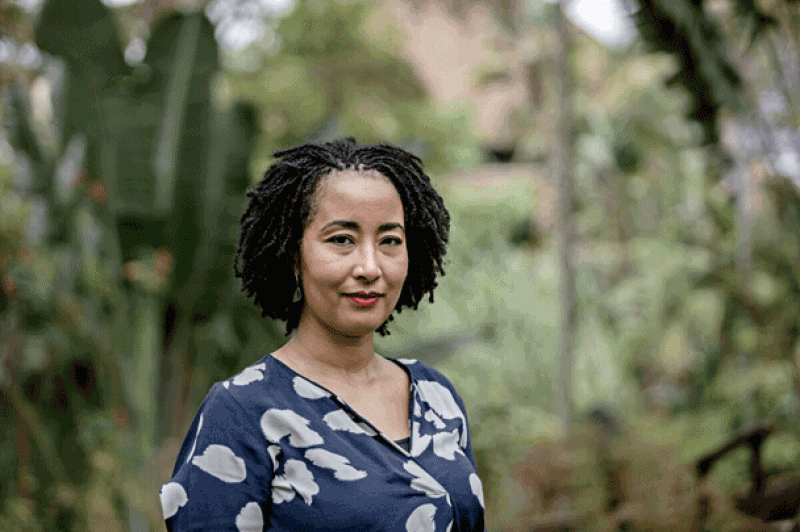- Body of Osman Hadi Returns to Dhaka From Singapore Late |
- Fakhrul condemns attacks on media, calls for unity, justice |
- 2 cops among 4 hurt in clash outside Indian Assit H.C. in Ctg |
- Inqilab Moncho urges people to avoid violence |
- Hadi’s death: Prothom Alo, Daily Star offices set afire |
Funds must also Reach the Right Communities

Fati Nzi-Hassane. Credit- Natalia Jidovanu-Oxfam
COP29: Climate Finance Goal is not Enough
By Fati N’zi-Hassane
NAIROBI, Kenya, Nov 18 2024 (IPS) - The 29th United Nations Conference of the Parties (COP29) currently underway in Baku, Azerbaijan, is a key global milestone for agreeing on a new compromise to reduce emissions and to provide to the Global South the much-needed finance to address the devastating consequences of the climate crisis.
While these climate talks must aim at having rich countries step up and contribute the resources needed, they must also be about how to ensure that the funds actually reach the most vulnerable…because right now, they don’t.
A study by Oxfam has shown that only 0.8% of the directly reported recipients of climate finance in the Sahel could be confidently defined as locally-based organizations. The bulk of climate finance goes to international organizations, an indicator of the level of exclusion that local actors still face in directly accessing and managing climate initiatives coming from international public finance.
Oxfam’s interviews with over 100 organizations in the Sahel – one of the regions most affected by climate change – revealed that a myriad of obstacles prevent civil society organizations from accessing available climate funds.
Application procedures are often too complex, and favor large, well-established organizations capable of meeting the bureaucratic requirements such as financial statements, letters of approval, environmental and social guarantees, proven experience in managing large budgets, and registration documents that are imposed on them.
Documentation and information sessions are often in English, a less accessible language for many Sahelians, not to mention the fact that information doesn’t even reach them in communities where access to the internet and electricity is limited.
Many funding mechanisms require a financial contribution from the organization, or financial guarantees in the case of loans, or even a multi-year financial balance sheet including audits and financial statements, conditions that smaller organizations are not in a position to meet. Short deadlines for application discourage many.
The program objectives that guide the use of funds are often imposed without taking into account the real needs of the target communities.
Marginalized by social norms within their own communities, women lack access to decision-making bodies, capacity-building opportunities, and land ownership, which prevents them from accessing financing mechanisms that require land as collateral.
In addition, finance tends to be less accessible in contexts affected by conflict, insecurity, and other multidimensional factors of fragility. This is mainly due to a risk averse approach by donors leaving out these areas from their geographical priorities, but also because of the high cost related to implementation, the difficulty to access project areas, and questions about the sustainability of investments.
Yet, it is exactly these fragile and conflict affected communities that are facing most urgent needs to address climate-related impacts and build resilience. One way of improving the flow of climate finance to such areas would be by creating more direct access mechanisms for local authorities and community-based organizations. Ultimately, they are the ones who are best placed to manage the barriers above.
Among the highly inaccessible funds are the Adaptation fund, the Global Environment Fund, the Green Climate Fund, and funds from financial institutions, such as the World Bank or the African Development Bank.
Civil society organisations (CSOs) and local communities in the Global South are leading on climate solutions in their contexts, for example, as first responders when disaster strike in their community, or as leaders rallying their community around disaster risk reduction or environmental conservation projects.
It is not only fair but also highly effective that they are able to access and manage as much as possible the international climate finance flowing to their countries. With the Loss and Damage fund, created following COP27, becoming operational, it is important to avoid the pitfalls of other climate funds and to facilitate communities’ access to this new source of financing.
Some simple changes that can improve climate finance access include removing barriers such as co-financing requirements, improving information sharing, making application processes simple and establishing specific quotas and direct access funding windows for national and local civil society organizations, especially the ones representing farmers, indigenous peoples, women, youth or people with disabilities.
The success of COP29 will be measured not only by the quantity of funds committed, but also by the quality of their allocation. Only funds that actually reach the communities on the frontline of the climate crisis and truly meet their needs will contribute to delivering climate justice.
Fati N’zi-Hassane is Africa Director, Oxfam International
IPS UN Bureau

